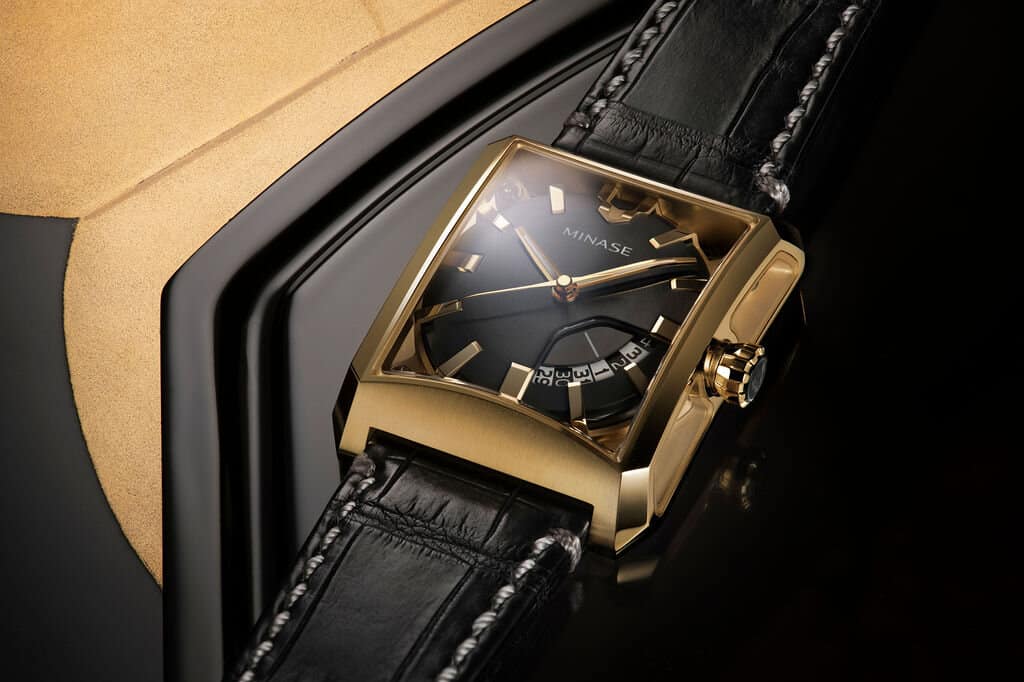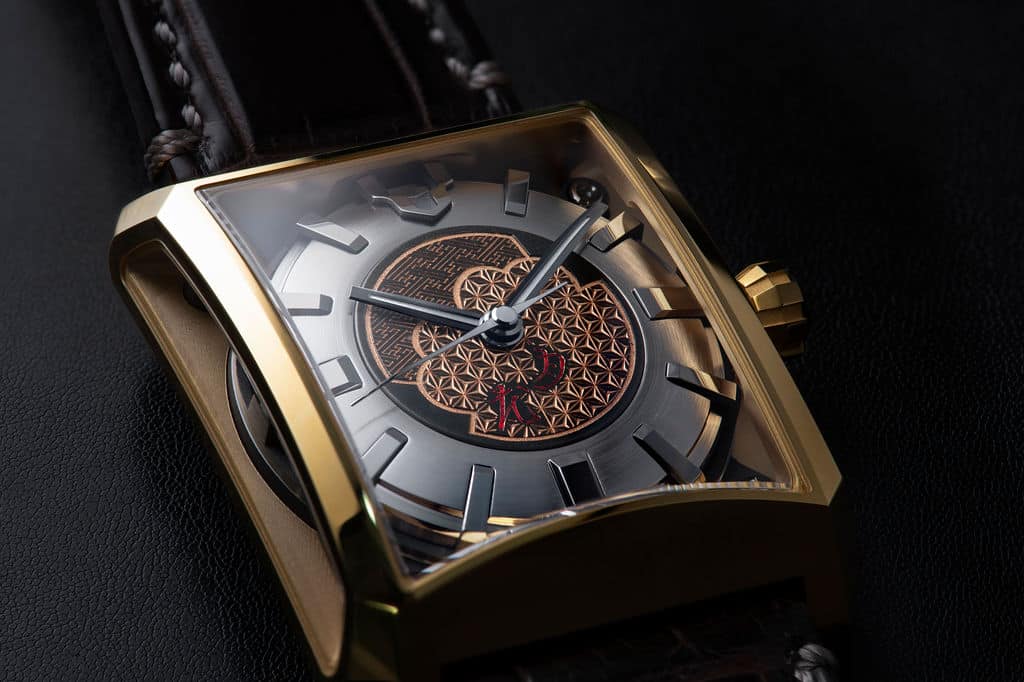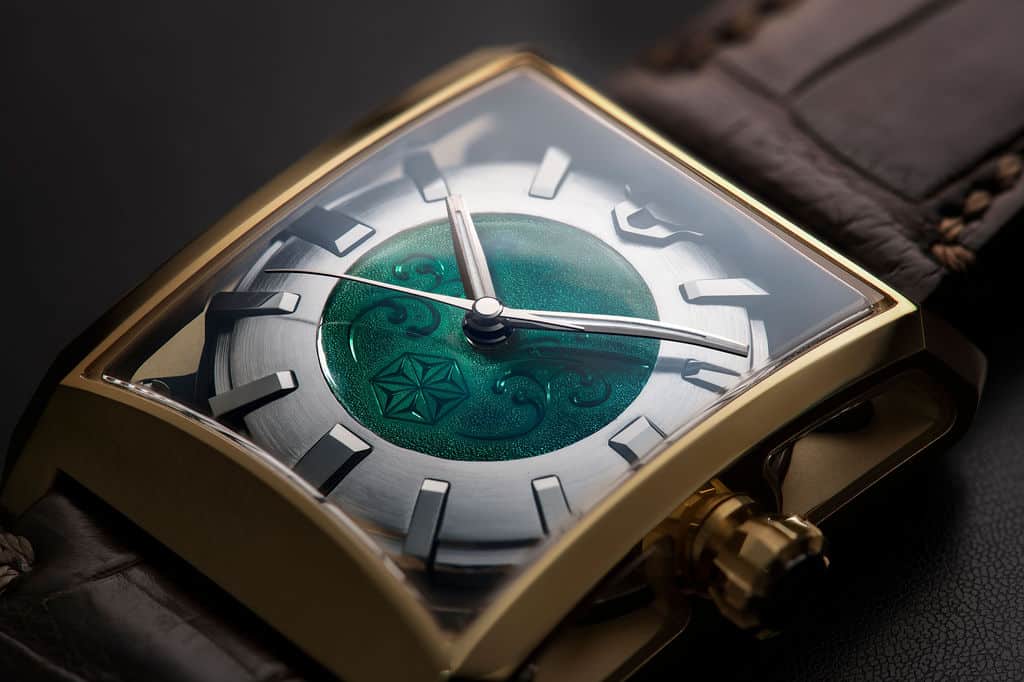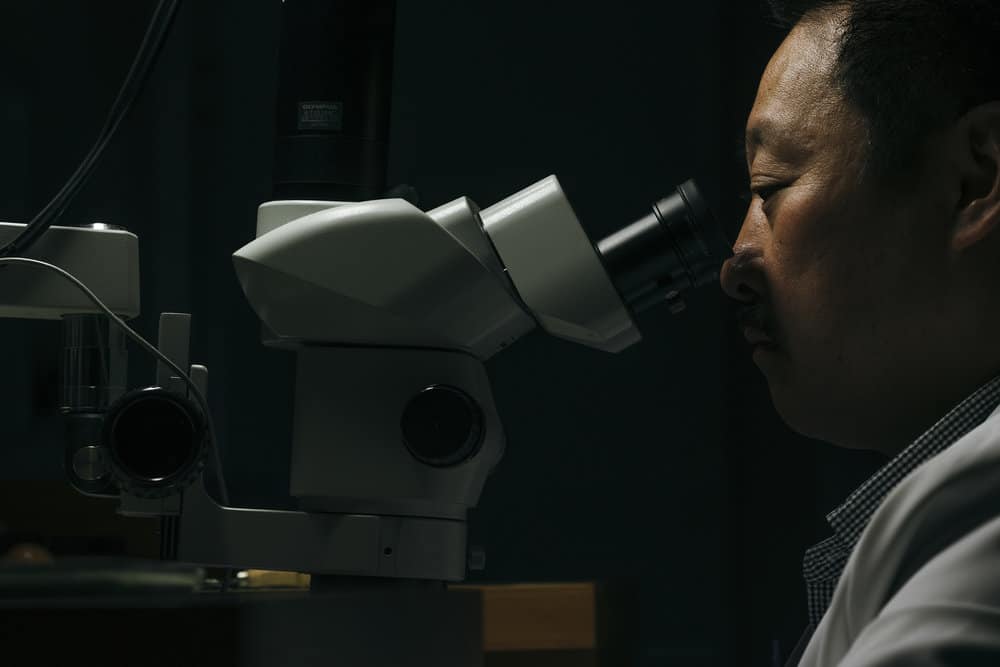Keiji Kanagawa Serie
The famous Japanese artist and sculptor Keiji Kanagawa engraves each gold case upon the customer’s request. May it be on the sides or on the back of the case, Kanagawa will engrave a theme upon the customer’s request. The timepieces can further be enhanced with a Kanji symbol engraved on the dial, or any dial from a classic one to one displaying traditional Japanese craft, such as Makie, silver filigree or needle art.
The Process
First, we will ask our clients to define what part of the case they want to be engraved. It can be the top sides, the back or even the plate covering the movement in side the watch case. Kanagawa also works on dials; he masters dial engravings and needle art. The customer can also choose a theme for his watch’s engravings. Afterwards, Kanagawa will make some drawings for the client to approve his ideas. Then only will the work of engraving start.
Gold Engraving Master Keiji Kanagawa
Keiji Kanagawa is renowned in Japan for the mangas he designed. Next to this, he’s also a very respected artist and sculptor, mastering several traditional crafts. From gold engraving to needle art, Kanagawa has already decorated many bespoke watches. In his boutique in Tokyo, he sell some Minase watches while working in the back-office. Minase is very proud to be able to collaborate with such a great artist who shares the brand’s values.
KEIJI KANAGAWA
ABOUT THE CHAMPLEVE TECHNIQUE

How long does the production take ?
Regarding a designed picture, there will be test and adjustment of the glaze, processing of the silver plate, and Champlevé, which may take about 2 months. It can be about a month to produce Champlevé in real hurry.
How many times of firing does it take ?
It depends on the techniques of using the glaze, but usually it takes more than 20 times.
How many degrees are the firing ?
It varies from 780 degrees to 810 degrees, depending on the process.
How is it different from ordinary enamel dial ?
Engraving the silver plate with hands, adjusting the width of thin walls partitioning the glaze, we can add dynamics and expression to the mandarin duck and waves to the water.
What was the hardest part during the production ?
The walls partitioning the glaze was extremely thin, it was very difficult to prevent the glaze from overflowing. Putting the glaze sand into the narrow delicate partitions, creating ideal gradation to the colors are also very difficult..











